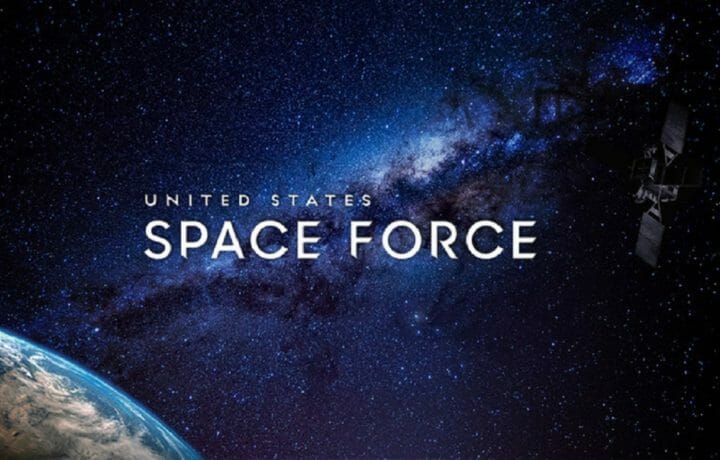This month, the United States Space Force, the sixth and newest branch of the United States military, celebrated its second anniversary. Space Force, which is an independent military service under the Department of the Air Force, was signed into law on Dec. 20, 2019. Over the past two years, it has seen its ranks grow, and currently has more than 6,500 uniformed “guardians,” as well as an equal number of civilian employees charged with operating and protecting the U.S. military’s satellites and supporting systems.
A Department of Defense (DoD) effort that began 18 months ago is still underway to transition thousands of members from the other military branches to the Space Force, which will consolidate space missions. However, Space Force will still remain under the Department of the Air Force, similar to how the Marine Corps is under the Department of the Navy.
Despite the efforts to transition military personnel from the other services, Space Force will likely always be a smaller branch of the military compared to the others, yet it will also be comprised of a highly skilled workforce that excels in STEM fields.
No Longer The Subject of Jokes
At a Washington Space Business Roundtable event on Dec. 15, Lt. Gen. Nina Armagno, director of the Space Force staff admitted that the service had gotten off to a rough start, as some in the public didn’t understand why the military needed a branch devoted to space. The fact that Netflix also produced a parody series called Space Force, starring Steve Carell certainly didn’t help matters.
“I think at first it was a little tough to realize the American people thought we were a joke,” said Lt. Gen. Armagno. “We decided we had to keep educating and keep talking about Space Force.”
The fact that China and Russia have invested heavily in space has also helped make it clear that the space domain is an important one for national security.
“We still have more educating to do, and we definitely want to bring Americans in and explain the threats we’re seeing,” Armagno added. “I don’t think we are the subject of the jokes from year one. So I think we’re making some pretty good progress.”
Space War
This month, the Space Force didn’t just celebrate its second anniversary; it also conducted an important test of satellite resiliency to threats from China and Russia miles above the surface of the earth. The test was conducted just weeks after Russia had shot down an aging communication satellite.
That included a computer-aided simulation that allowed Guardians to respond to the shooting of a U.S. missile track satellite, satellite jamming, and other electronic warfare efforts that could occur in the space domain. Actual satellites were not employed.
During a visit to Schriever Space Force Base in Colorado, Deputy Secretary of Defense Kathleen Hicks was able to see the ‘Space Flag’ simulated space training exercise hosted by U.S. forces. It was the 13th such exercise to be conducted, and was also the third to involve partners including Great Britain, Canada and Australia.
“It happens in rooms like that … people at a relatively junior level in many cases. Collaborating and thinking through challenges and trying to figure out concepts that seem to make sense and discarding ideas that go astray,” Hicks told reporters en route to Hawaii.
The 10-day-long space war game also was meant to simulate the cutting edge of the U.S. capability in the domain. The training exercise reportedly involved an adversarial group working to simulate an aggressor nation with space capabilities like Russia or China.
New Weather Satellite Contract
This month, the U.S. Space Force awarded a $67 million contract to Raytheon Technologies to test a prototype weather system the company had designed for the service. The Space Force had previously selected Raytheon Intelligence & Space to design a prototype for the Electro-Optical Infrared Weather System (EWS) in 2020. The program was developed to replace the Defense Meteorological Satellite Program (DMSP), which had provided cloud characterization and theater weather imagery observations data to the military since the 1960s.
The DMSP satellites are currently nearing the end of their service life, and officials have expressed concern that they may not survive until 2024. Congress had directed the Air Force to replace DMSP with a new system in 2015.
“Continuing the DMSP EO/IR capability is critical to military planning for land, sea and air operations” Paul Meyer, vice president of space and command-and-control systems at the Raytheon intel and space unit, said in a statement. “Our satellite will integrate into the early morning orbit, ensuring a seamless transition of weather data without any additional processing.”
Raytheon Technologies completed the preliminary design reviews last January, and has been working toward a final design review as well as a “downselect” to be completed by January 2022. Raytheon announced that it could deliver a final system ready for launch by 2025.


